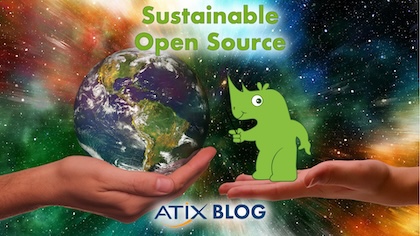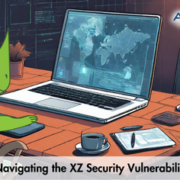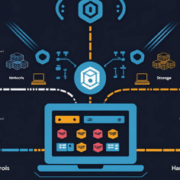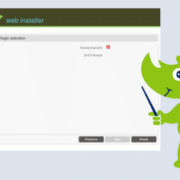Open-source software today and tomorrow
The color green and open source—not an obvious match, at first glance. Really not? Wrong! Open source actually is green. Would you like to know in what way this is the case and what everything has to do with ATIX’s green rhino and Istio? Then enjoy reading my blog!
Open Source is sustainable—hence, so is orcharhino
Green is currently the color of choice. People talk about a green footprint, green electricity, green travel, green markets, … there seem to be no limits. With orcharhino, a tool for automating data centers, ATIX is spot on. And not just in terms of the color of the little rhinoceros, no, when it comes to software, open source is also a sustainable—i.e., green—solution. At the Bits & Bäume conference, experts reported that the Blue Angel certificate was awarded to software for the first time in 2022. Criteria are resource and energy efficiency, potential useful life of the hardware, and autonomy of use.
Since open-source software is very free in its design, it can be adapted to meet these criteria. This makes it possible to permanently reduce the energy consumption of data centers without having to do without important features. Open source can thus drive digitization in a sustainable way—a trend that is supported by organizations from environmental protection, nature conservation, digital policy, development cooperation, and science. (Source: https://osb-alliance.de/verbands-news/nachhaltige-digitalisierung-ist-nur-mit-open-source-software-moeglich)
Open source has a viable future
Recently, circumstances have changed for all of us. Inflation is rising, so are gas and food prices, and markets are more turbulent than ever. Therefore, companies will rely even more on open-source solutions in the future. Open source is already mainstream and will continue to expand this role in the years to come. This will make it more difficult to ensure that cooperation and innovation still take center stage. According to Dev Insider, three trends are emerging.
Many users will work harder to emphasize the basic principles of community and cooperation. The open-source community will resist companies that boycott innovation or block members. In addition, large providers will cooperate so as to carry out projects more quickly. ATIX, as a company, is also actively contributing to the open-source community. Furthermore, Istio will become the “Kubernetes of the Service Mesh.” This service mesh platform, which is based on open source, allows users to control how microservices share data with each other. It is strongly oriented toward Kubernetes and supports the transition from VMs and bare-metal solutions to containers. Thus, it is the best way to provide a higher level of security. For this reason, ATIX now also offers an Istio Training. Have a look at our website! In addition, service meshes will become more important for companies to secure their applications and networks. Microservices are increasingly creating areas that are even more vulnerable to security holes, so that service meshes will soon be indispensable. 2024, like the last few years, will also be challenging. Therefore, collaboration is a top priority to ensure that open-source solutions continue to thrive through the community. Only in this way can users ensure that their systems communicate and work securely and reliably with each other. ATIX has specialized in exactly these topics. Are you currently thinking about modernizing your IT infrastructure? Are independence, flexibility, and sustainability important to you? Feel free to contact us!










